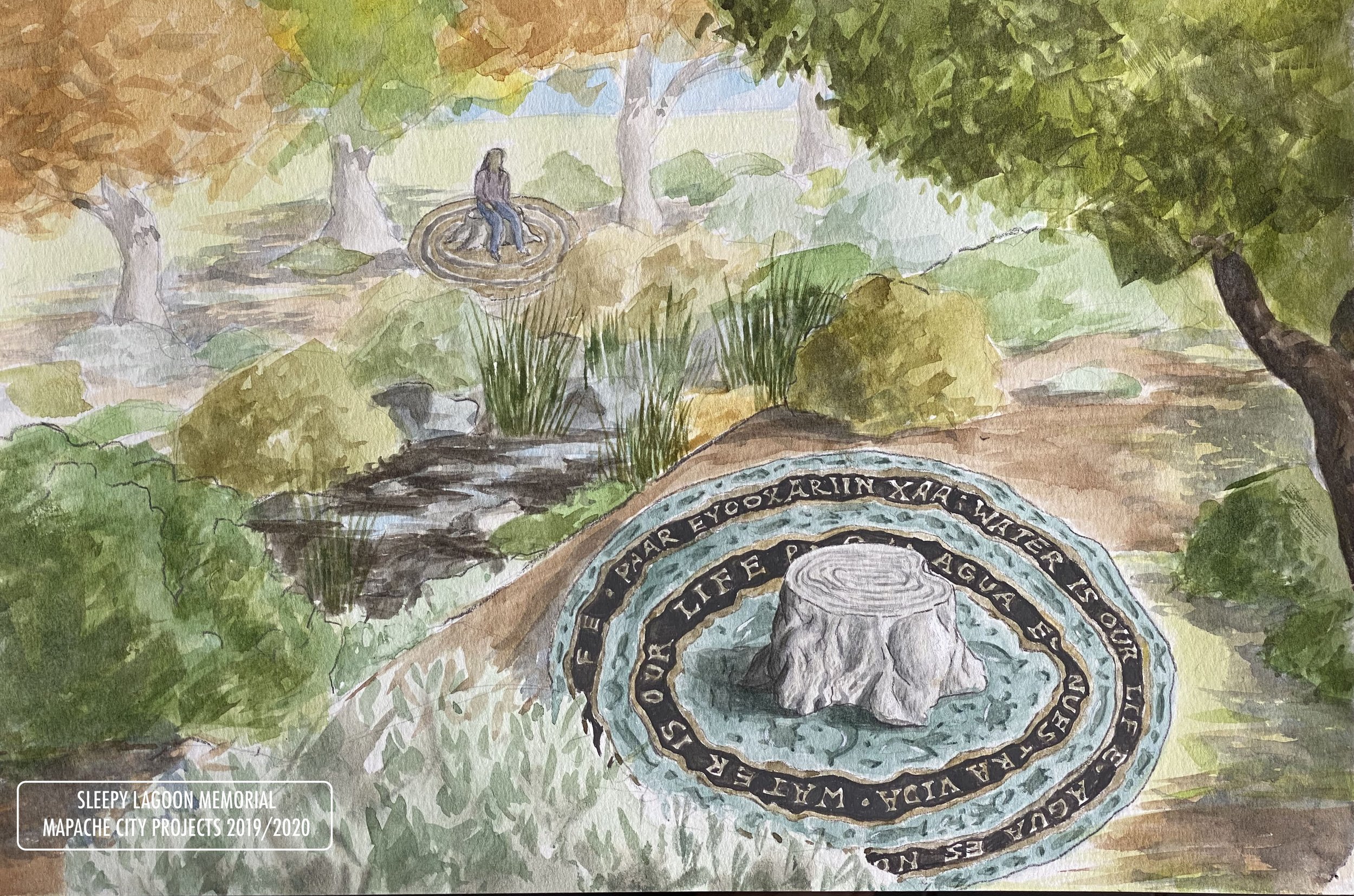
The Stories of People and Place
As people come to appreciate the Sleepy Lagoon Memorial, it is important to reflect on the physical landscape of the area in its present state as well as throughout time. As often happens in historical recording, various layers of knowledge present themselves in a way that one narrative is succeeded by another that simultaneously affirms a particular reality and historical context. In doing so, whether intentional or not, such historical affirmations simultaneously function as erasures of what preceded it. The Sleepy Lagoon Memorial attempts to connect the historical dots of the physical landscape of the area as it has been and as it is.
Zoot Suiters and The Sleepy Lagoon
The Sleepy Lagoon was a popular swimming place for non-white youth who were excluded from public swimming pools due to segregationist laws in the 1930s-1940s. It is reported that the Sleepy Lagoon got its name from the title of a popular song at the time by trumpeter Harry James. In 1942, a murder occurred at Sleepy Lagoon resulting in the death of Jose Gallardo Diaz. This incident spurred widespread prejudice, discrimination, and racial profiling across Los Angeles of Pachucos, an interracial youth subculture identified by their zoot suits - resulting in police roundups, media attacks, and public violence targeting Zoot Suiters.
Tongva Settlements
Prior to Spanish colonialism, Tongva people occupied the space where the Sleepy Lagoon was located. Prominent villages included Chockishnga, Wenot, Apachiagna, and Yangna. At the time of the establishment of Mission San Gabriel it is estimated that 5,000 Tongva lived in the Los Angeles Basin. There existed more than 50 independent villages that were inhabited by populations that ranged from 50 to 150 people. Contrary to popular belief the Tongva continue to thrive in Los Angeles—a culture stewarded by its descendants.
The Spanish-Mexican Period
During the Spanish-Mexican period Mission San Gabriel was established near the vicinity of the Tongva Village Isantcangna in 1771. This moment marked a historical shift in the historical trajectories of the land’s occupants. A settlement near the mission included the Chockishnga, near present-day Bell Gardens and the site of the Sleepy Lagoon. The land was eventually granted to Antonio Maria Lugo of Rancho San Antonio, a rancher.
The American Period
The United States occupied the Southwest after the Mexican-American War. Antonio Maria’s inheritors would eventually marry into the family of Henry Gage, future governor of California. The lands where Sleepy Lagoon was located were eventually subdivided into smaller ranches and eventually into an industrial zone known as the Central Manufacturing District. Eventually becoming the cities of Huntington Park, Maywood, Bell, City of Commerce, Cudahy, and Bell Gardens.
1940s-Present
The establishment of the Central Manufacturing District in this part of Los Angeles during the 1920s-1940s altered the landscape and functionality and did not come without consequences. It followed the displacement of immigrant settlements. The area where the Sleepy Lagoon was located was inhabited by Italian, Chinese, and Mexican farm workers prior to the Central Manufacturing District. As the 20th Century continued, the area further developed into an industrial zone, freeways spread out across the region, city’s incorporated and the Sleepy Lagoon disappeared from the map. In its place stands the Bell Business Center in the City of Bell.



